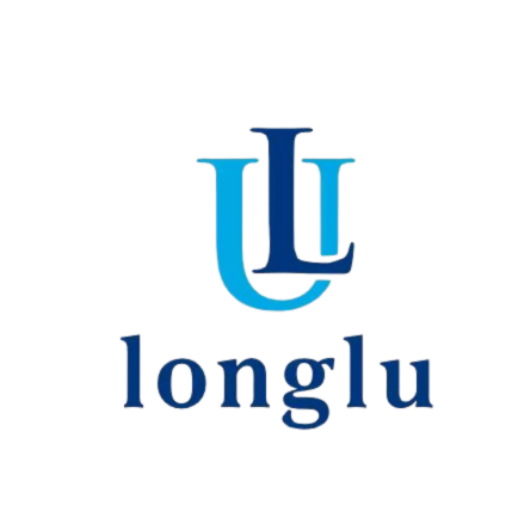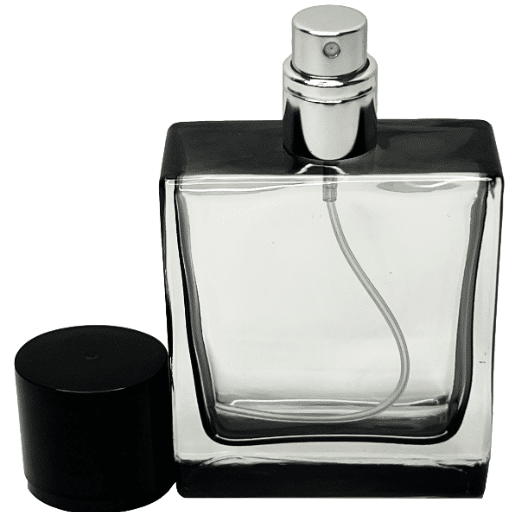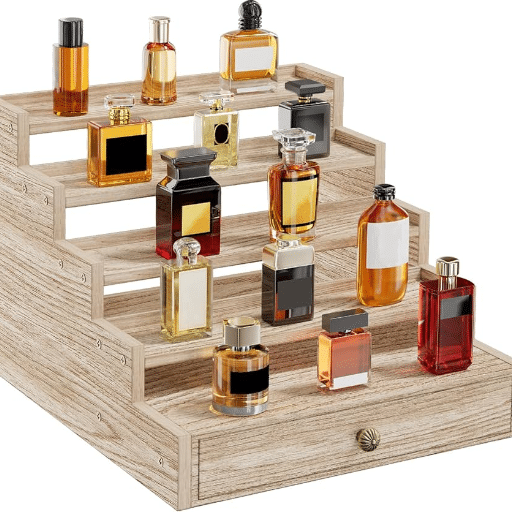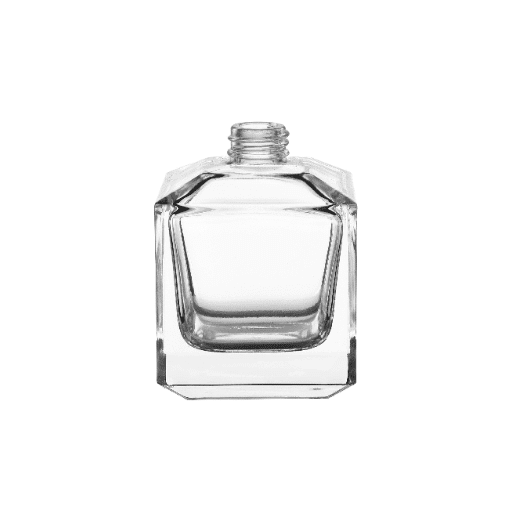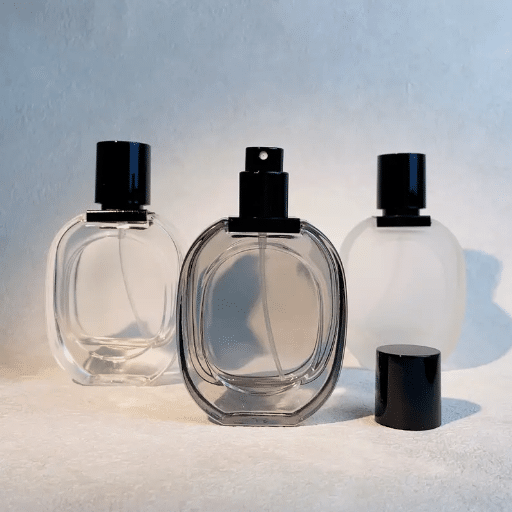The perfume industry conveys glamour, sophistication, and the tiny exclusives that translate into an epic sensory experience. The glass perfume bottle stands tall in the hearts of customers due to the fragrance protection it offers, along with the intricate design and craftsmanship that adds to the glass’s beauty. In such fast-changing market conditions, wholesalers should learn the delicate nuances involved in sourcing, selecting, and investing in glass perfume bottles. It will lay bare all the crucial elements of wholesaling perfume bottles, from material quality and design trends to bulk buying considerations. This guide will provide valuable insights into glass perfume bottles for seasoned dealers and novices alike, helping you make informed decisions that cater to market needs and aesthetics.
Understanding Wholesale Perfume Bottle Options
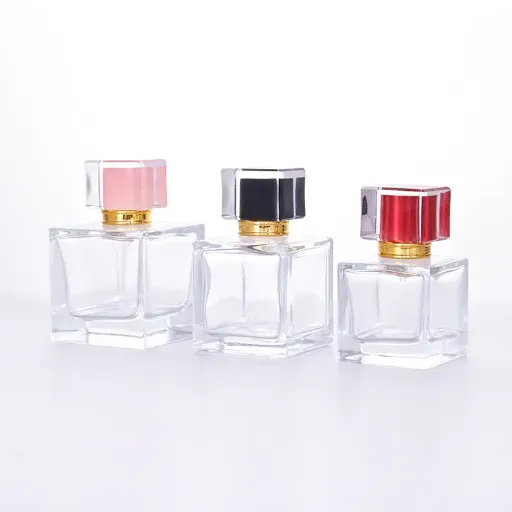
The wholesale perfume bottle trade offers a wide range of variants, including those that can be selected based on material, design, and functionality. For typical uses, most bottles are made of glass or plastic, although glass is often chosen for its durability and aesthetic appeal, particularly for various types of fragrances. Design-wise, variables such as dimensions, shape, and initial impressions of ease of use must all be considered, as these factors can significantly impact the final look of the packaging and the carrying ease or difficulty of the package itself. Buyers should select suppliers that provide customization capabilities to suit their brand image needs at competitive pricing with consistent delivery quality. Always check the supplier’s reliability, successful past reviews, certifications, and production capabilities to ensure the capacity to satisfactorily and timely fulfill bulk orders.
Types of Wholesale Glass Perfume Bottles
| Type | Key Features | Common Uses | Closure Options | Notable Design Elements |
|---|---|---|---|---|
| Classic Cylindrical Bottle | Simple, timeless appearance | General-purpose fragrances | Screw cap, crimp spray | Smooth, sleek body |
| Rectangular Bottle | Modern, bold profile | Niche and designer perfumes | Magnetic or screw cap | Sharp, clean edges |
| Round Bottle | Ergonomic, compact design | Travel-friendly fragrances | Crimp spray, pump dispenser | Rounded, elegant finish |
| Square Bottle | Sophisticated, symmetrical structure | High-end and luxury scents | Magnetic closure | Thick, flat base |
| Novelty Shaped Bottle | Unique, creative forms | Limited edition, specialty scents | Custom closures | Intricate shapes, decorations |
| Transparent Bottle | Clear, minimalist aesthetic | Showcasing inner liquid color | Screw cap, atomizer | Polished glass clarity |
| Frosted Glass Bottle | Matte, premium finish | Subtle, understated fragrances | Various spraying mechanisms | Softened surface texture |
| Colored Glass Bottle | Vibrant or subtle hues | Thematic fragrance displays | Customized closure options | Enriches visual branding |
| Refillable Bottle | Eco-friendly, reusable | Sustainable and value-focused use | Removable sprayer/cap | Durable, practical materials |
| Miniature Bottle | Small, convenient size | Sample or travel-sized perfumes | Screw cap, mini sprayer | Compact, portable aesthetics |
Benefits of Buying Wholesale Perfume Bottles
Cost Efficiency
Wholesale purchasing of perfume bottles brings about a reduction in unit costs paid by end businesses. Bulk buying typically offers the buyer hefty price discounts compared to smaller quantity purchases, cutting the cost of materials by 20% to 50% or more, depending on the stipulations set by an individual supplier. It also ensures minimized expenses and maximized profit margins, making it suitable for startups and already established brands.
Enhanced Customization Options
Another benefit of wholesale buying is the opportunity for negotiation of uniqueness that may arise when a supplier accepts their own branding requests from a company placing large-volume orders. Custom design encompasses in-house bottle shapes, custom closures, embossed logos, and spray devices, all custom-engineered to carve out a unique position in the market. This is particularly important for brands that want to differentiate themselves visually.
Streamlined Supply Chain Management
With such purchasing patterns, the risk of disruptions is diminished. Having that inventory will keep production schedules on track, ensuring that customers are not disappointed. The operational side is well set, and so is the smoothness of business dealings.
Environmentally Sustainable Practices
Wholesaling refillable or recyclable perfume bottles, if possible, aligns with sustainability. Bulk purchases minimize packaging waste and transportation emissions-a move in sync with global trends toward greener operations. Refillable bottles offer customers an environmentally conscious option, helping to shape a sustainable brand identity for the company.
Variety and Versatility
Wholesale suppliers offer a wide range of bottle designs, sizes, and types. Customers have a choice between mini bottles for travel sizes, colored glass for high-end branding, or refillable designs for sustainability-aware marketing. This choice enhances product differentiation, enabling manufacturers to fulfill a wide range of consumer preferences.
Scalability for Business Growth
Securing wholesale supplies supports scalability, as a business can easily expand to meet increasing demand. For growing brands, the ability to source large volumes of materials at once means that they can scale up production without the agony of supply shortages.
Key Features of Quality Glass Perfume Bottles
Clarity and Transparency
An excellent set of glass perfume bottles boasts the highest degree of clarity and transparency, presenting the colors and textures of the perfume in a way that appears extremely attractive to the customer. Generally speaking, glass should have at least 90% light transmission, allowing the perfume held inside to be displayed without any disturbance.
Durability and Strength
High-grade glass in perfume bottles is designed to be resistant to breaking when subjected to external stimuli. On average, a good-quality glass should be able to resist compressive strength levels of at least 100 MPa, which is adequate for handling and storage over a period.
Chemical Resistance
High-quality glass perfume bottles are designed to prevent their surface from chemically reacting with the perfume itself. They usually use borosilicate or soda-lime glass because such glass has a surface that prevents any change in the perfume formulation or contamination thereof.
Precision in Design
Essentially, the construction of a dependable perfume bottle requires a high-precision manufacturing process, achieving a tolerance with a value of ±0.1 mm. This ensures that the sprayer mechanism is securely attached to the bottle and creates a perfect seal without leakage.
Customization Options
Manufacturing systems enable detailed customization options, such as engraving, grinding, or colored coatings. Statistics show that a majority of customers (more than 60%, according to market research) prefer uniquely designed perfume bottles to strengthen the brand image.
Environmental Sustainability
The glass used for high-quality perfume bottles is mainly recyclable; many suppliers today produce bottles with a minimum of 50% recycled glass content. This trend aligns with the increased demand for sustainability within the cosmetics sector to mitigate the negative environmental impacts.
Finding Reliable Perfume Bottle Suppliers
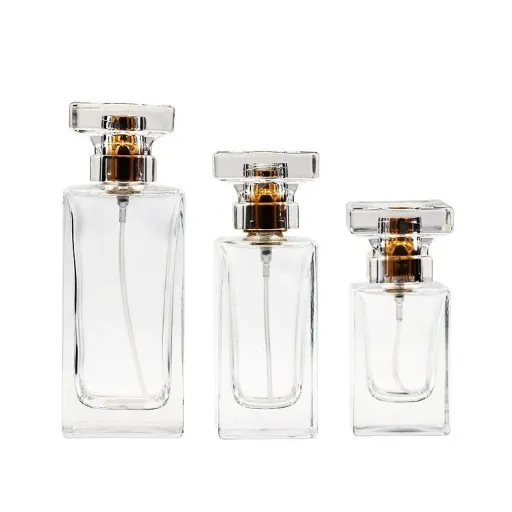
When searching for trusted perfume bottle suppliers, consider choosing those with a good reputation in the perfume bottle industry. Obtain suppliers that can provide high-quality materials, custom design options, and manufacturing processes adhering to international standards. Verify certifications on their end to ensure they comply with safety and environmental regulations, such as ISO certifications for quality management. Also, check for suppliers promoting sustainability initiatives, such as the use of recyclable materials or recycled glass in their manufacturing process. Analyze client reviews, request samples from them for product quality evaluation, and compare their pricing and lead times to assess whether they meet your business needs. Also, ensure that you keep a good communication flow to nurture a solid relationship.
Evaluating Perfume Bottle Manufacturers
Utilizing the latest industry knowledge and technological advancements enables a more comprehensive understanding of potential perfume bottle manufacturers. Check if manufacturers have introduced state-of-the-art manufacturing operations, such as automated molding with bit volume control or environmentally conscious glass blowing, to ensure quality consistency and reduce material wastage. Also, review their stance on changing regulatory standards, such as REACH and RoHS, to ensure that suppliers are sourcing and manufacturing responsibly. Consider their production capacity and scalability to determine if they can meet fluctuating consumer demands without compromising promised delivery timelines. Market reports on current trends indicate an increase in demand for customization options; therefore, it is of significant priority to select manufacturers that provide flexible design services, such as engraving, special coatings, or individual bottle shapes, to meet their branding needs. Additionally, audit their reputation for fulfilling global shipping requirements to ensure they meet packaging standards, thereby maintaining packaging integrity during shipment. Having access to such detailed information enables you to conduct a successful selection in accordance with both quality criteria and business requirements.
Factors to Consider When Choosing a Supplier
Product Quality and Compliance
Good manufacturing practice ensures that suppliers manufacture in accordance with the appropriate industry standards and certifications. Evaluation of their ability to maintain consistent quality standards should be conducted through quality management systems, such as ISO 9001 certification. Additionally, compliance with regulatory standards should be an absolute must; FDA and REACH requirements are key considerations for the food, pharmaceutical, and chemical industries.
Production Capacity and Scalability
The supplier must demonstrate that it can meet the required production volumes in relation to both current and foreseeable demands. Please consider their equipment, manufacturing facilities, and lead times. The ramp-up capability of production without compromising quality is essential, particularly during peak periods and unexpected surges in demand.
Geographical Location and Logistics
The relative distance of the supplier to your distribution centers or consumer base may have a direct correlation with shipment periods and costs. Assess their readiness for efficient international shipments, including customs procedures and packaging standards, to ensure the safe transit of goods. Another influencing factor for production timelines and costs is the distance to raw material sources.
Technology Integration and Efficiency
Suppliers who utilize cutting-edge manufacturing processes, process automation, and real-time process monitoring provide the comfort associated with efficiency. Technology-based processes significantly reduce defect incidence, ensure traceability, and introduce transparency in the entire supply chain.
Financial Stability and Reliability
Suppliers with financial stability are less likely to cease their operations suddenly. Analyze the economic history of selected suppliers that include revenue growth, operating profits, and other relevant criteria for evaluating alternative financial characteristics, and to determine whether your chosen supplier is capable of future commitments as a partner in turn.
Sustainability Practices
With this emphasis on environmental responsibility, a good supplier should have sustainable practices in place for consideration. These include environmentally friendly materials, zero waste for production, and carbon neutrality goals. Nowadays, many companies require their suppliers to align with Environmental, Social, and Governance (ESG) objectives.
Importance of Customer Reviews and Ratings
The ratings of a product and service reviews are indeed valuable indicators of past performance, providing feedback related to user satisfaction, quality, and reliability. These data points serve as a real-world case of use and act as a competitive marketing edge in influencing customer purchasing decisions. Research shows that most customers consider reviews a primary factor when trusting a brand. Detailed feedback highlights specific strengths, such as extraordinary breakability under stress from thrust and excellent customer service, while also outlining areas where improvement is needed. In addition, aggregate rating systems numerically represent customers’ opinions, allowing businesses to use them to refine and improve their offerings and service delivery, thereby gaining a competitive edge. Verified reviews also ensure that a buyer has genuinely rated the item, thereby eliminating fake reviews and providing a transparent and credible evaluation channel. In essence, organizations that utilize customer reviews to the fullest extent can better engage customers and foster long-term loyalty, providing clear visibility into market needs.
Cost-Effective Sourcing Strategies
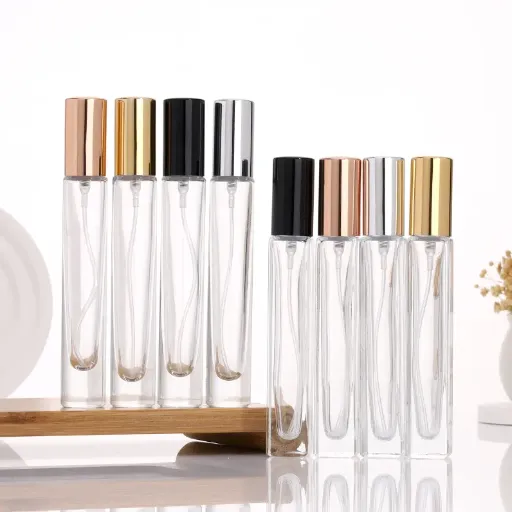
Cost-effective sourcing can be implemented based on three leading ideas:
- Supplier Relationships – Establish and enhance supplier relationships with reliable suppliers. Such interaction brings long-term cost savings through good terms negotiations and bulk purchases, which lower the per-unit cost.
- Market Research – Conduct all kinds of market analysis to fathom alternate suppliers or regions where production would be cheaper. Further optimization can be based on the availability of resources and the labor costs associated with offshoring or nearshoring.
- Technology Integration – Procurement software and automated tools can be engaged to support sourcing processes. These technologies would enhance the identification of cost-saving opportunities, tracking, and minimize manual errors.
Integrating these concurrently would yield a viable balance between cost reduction measures and the efficiency of the supply chain.
Leveraging Online Marketplaces for Bulk Purchases
In this manner, online marketplaces have become increasingly crucial for businesses searching for bulk purchasing solutions at reasonable costs. These platforms provide access to a global supplier network, enabling companies to compare prices, negotiate terms, and ultimately secure the best possible deal. Additionally, many online marketplaces offer vendors’ performance analytics, price analytics, and product availability graphs to assist organizations in making informed decisions based on data. Combined with central purchasing dashboards that simplify the procurement process, these features contribute to reducing administrative responsibilities while enhancing order accuracy. The digital payment systems and logistics tracking behind these marketplaces offer an exceptionally smooth supply chain experience, minimizing delays and bolstering operational capacities. Online marketplaces act as enablers, which in turn strengthen business scale and ensure dependable sourcing in a more challenging environment.
Attending Trade Shows to Discover New Suppliers
Trade show exhibitions offer a valuable platform for identifying new suppliers, establishing industry contacts, and staying informed about emerging market trends. Trade shows provide a kaleidoscope of vendors that enable businesses to explore the details of how far products and services extend, assessing their quality and suitability. According to the latest industry reports, trade shows have been, and continue to be, one of the most effective ways to discover suppliers, with over 80% of trade show attendees stating that product sourcing is their primary driver. Additionally, live demonstrations enable businesses to gain a clear understanding of their suppliers’ potential capabilities and technical innovations. Furthermore, face-to-face communication at trade fairs fosters even greater trust and paves the way for negotiations regarding customized and cost-effective solutions. When implemented strategically, trade fair attendance will prove to be one of the most beneficial cost-saving and growth-stimulating strategies for businesses across various sectors.
Building Long-Term Relationships with Trusted Suppliers
Longstanding relationships with excellent, reliable vendors provide the lifeblood for efficient structures and, in turn, ensure the timely delivery of goods and services of exceptional quality. Research shows that organizations that consider collaboration between themselves and their suppliers have realized a cost reduction of approximately 20% due to increased transparency and fewer processes. Another factor and a way in which organizations might build strategic alliances is that they could collaborate to solve problems, such as forecasting demand fluctuations or addressing sustainability issues. Utilizing technology-driven solutions—such as SRM (supplier relationship management) software—the company can gain insight into supplier performance metrics, identify areas for improvement, and foster an atmosphere of accountability. Insofar as time permits, these partnerships drive innovation, whereby shared insights between an organization and its suppliers translate into better products and processes, along with mutual growth.
Market Trends in Perfume Bottle Wholesale
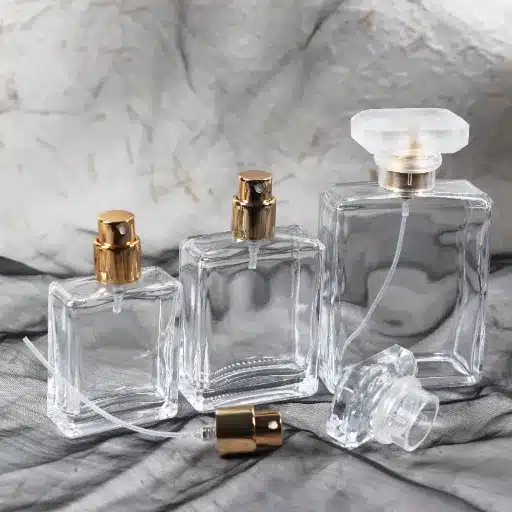
The current perfume bottle wholesale industry is a mix of sustainability demands, innovative designs, and ever-changing consumer tastes. Eco-friendly materials, such as glass and recycled plastics, are gaining importance as brands attempt to meet sustainability standards and directly court environmentally conscious consumers. On the other hand, interest in bottle designs that are resistant to customization is increasing as companies strive to differentiate their products in a highly competitive market. Digitalization is a significant development; on the other hand, as companies utilize online platforms for bulk purchases, supplier relationships, and streamlined distribution activities. An agent of these mentioned factors would be the strength exerted on suppliers to maintain adaptability, environmental consciousness, and innovation so they can stay relevant in the market.
Sustainable and Eco-Friendly Packaging Solutions
Currently, the packaging industry is embracing sustainability as consumers and regulators call for environmentally conscious alternatives, while at the same time. Essential advances also lie in the evolution of biodegradable materials derived from natural sources, including cornstarch, sugarcane, and bamboo, which reduce the need for fossil fuel feedstock not only because they degrade quickly with minimal environmental impact, but also because they are sustainable.
Other advancements include reusable packaging solutions, such as returnable glass containers, and more durable multi-use packaging, which significantly reduce waste generation. Recycling technologies have also been developed recently, as well as previously, which were unable to recycle materials beyond environmental capacity. This has allowed for the recovery of materials at a much higher level than was previously possible, thereby significantly reducing dependence on landfills. Companies are pursuing a strategy for packaging called lightweighting that reduces the amount of materials used while ensuring that the packaging remains stiff enough. In addition to reducing material costs, this also reduces energy consumption along the supply chain.
According to recent data, the adoption of sustainable packaging solutions is expected to prevent up to 2.5 million tons of plastic waste annually by 2030. Firms that focus on designing for environmental protection and using eco-friendly materials not only preserve nature but also attract consumers and comply with tightening environmental legislation. This instance suggests that green technology investment is crucial for securing both further growth and sustainability in the packaging industry.
Customization Opportunities for Perfume Bottles
Gifting the individualization of perfume bottles has become an integral component of product differentiation and brand identity in the perfume industry. New manufacturing techniques, such as 3D printing or precision molding on glass, have made designs possible that were previously impossible to conceive. These solutions enable brands to create customized bottle shapes with details tailored to their individual aesthetics and association with their target demographic.
Consumer demand for customization has also encouraged flexible options such as personalized names and colors on gradations, along with removable parts, to enhance consumer support. Research indicates that customized packaging is a crucial factor in customer loyalty and engagement. Additionally, evidence shows that the presence of customization options on a product significantly enhances a consumer’s perception of value.
Sustainability is, indeed, an ongoing aspect of customization. Eco-aware consumers find refillable designs appealing, along with modular components, which provide for an extended lifecycle of a perfume bottle. From a brand standpoint, these packages incorporate green materials, such as biodegradable polymers and recycled glass, which also make for a fitting aesthetic choice. In this way, these strategies address market demand, and by their nature, they support ecological objectives.
Quality Control in Wholesale Purchases
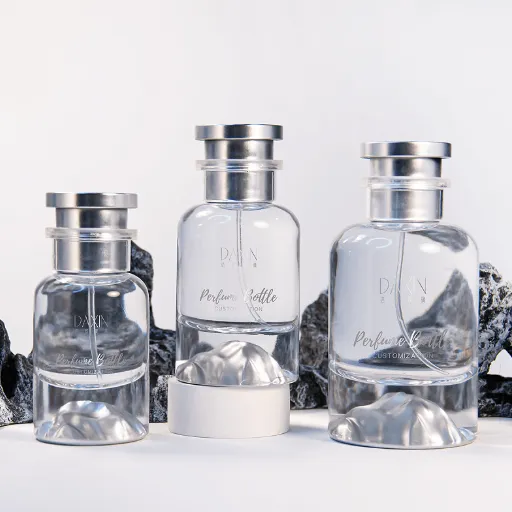
Strict quality control of wholesale purchases ensures consistent products and customer satisfaction that is worthy of a gross profit. Usually, the quality control process involves inspections at several levels—some before shipment, some upon receipt by means of random sampling —and the requirements most commonly deal with matters of material quality and conformity to working specifications and packaging arrangements. Due diligence should be exercised in choosing wholesale purchase partner suppliers having a good reputation and who maintain industry standards and certifications. Additionally, the introduction of a defined protocol for inspection and acceptance, along with the use of third-party inspection services, would provide another layer of confidence, ensuring that any deviations are identified and rectified prior to consumer release.
Ensuring Consistency in Glass Bottle Quality
Maintaining consistency for glass bottles is extremely important in upholding a brand’s reputation and ensuring the safety of the product, especially in the realms of food, beverages, and pharmaceuticals. Advanced inspection systems utilizing machine learning and AI are now gaining widespread recognition for their ability to detect nearly undetectable defects, such as micro-cracks, thickness anomalies, or contamination, which traditional inspection methods often overlook. Non-destructive testing (NDT) methodologies, which include optical or ultrasonic inspection, may be another dimension of quality control, enabling real-time analysis without compromising the structural integrity of the bottle.
The integration of statistical process control (SPC) systems into manufacturing processes will provide excellent consistency in monitoring crucial variables, such as temperature stability during production, the composition of raw materials, and the dimensional precision of molds. This kind of data-driven insight will enable manufacturers to control and refine their processes, thereby minimizing variability and further improving their operations. Powered by advancements in traceability solutions, it becomes feasible to ascertain the identity of every single bottle and to link every single piece of production data all the way back to its origin, thereby creating transparency and accountability throughout the entire lifecycle. These measures will significantly reduce the margin of error while helping to establish standards for consistency in glass manufacturing quality.
Implementing Quality Control Measures with Suppliers
Every measure relating to quality control, integrated with suppliers, must be decided upon initially with clearly defined expectations for quality and standards. This, therefore, means that a more rigorous initial qualification process will be in place, comprising supplier audits, testing of material samples, and evaluation of production methods. Once qualified, suppliers and manufacturers build all-around cooperation with the help of real-time data-sharing platforms. These platforms enable the gathering and comparison of key performance indicators (KPIs), including defect rates, material quality, and delivery timelines. Advanced analysis tools can further discern supplier behavior patterns, enabling initiatives for continuous improvement. Likewise, the evaluation and re-evaluation of suppliers allow the effective use of predictive modeling to identify and mitigate potential quality issues at an early stage. Transparency and stringent quality assurance procedures will enable the manufacturer to minimize risk and ensure the reliability of the supply chain.
Managing Inventory for Perfume Bottle Businesses
Effective inventory handling techniques in the perfume bottle trade are of vital importance to ensure smooth operations and meet ever-changing customer demands. Since the goal of inventory optimization is to prevent overpriced stocks or stockouts that can lead to high profitability trade losses, it involves methods of forecasting demand and implementing just-in-time inventory systems. With the installation of more advanced software supported by machine learning algorithms, businesses can accurately project trends, provide real-time updates on stock levels, and even automate replenishments. Additionally, conducting an ABC inventory analysis for stocks would categorize stocks into classes based on value and rate of turnover. This will allow businesses to focus their attention on items of higher value and, in turn, optimize the space used for storage. In conjunction with these strategies, a well-organized supply chain management setup will enable the company to operate in a streamlined manner at a reduced cost, ultimately leading to enhanced customer satisfaction.
Reference Sources
-
Challenges and Opportunities To Establish A Niche Perfume Company In France
- Summary: This study explores the challenges and opportunities for niche perfume companies in France, focusing on consumer preferences for bottle sizes and designs. It highlights that 100ml bottles are the most preferred, followed by 50ml bottles.
-
- Summary: This research examines the impact of perfume packaging on consumer behavior in the Lebanese market. It reveals that visual appeal, material quality, and design significantly impact purchasing decisions.
Frequently Asked Questions (FAQs)
Q: How do I choose a reliable perfume bottle supplier?
A: Choosing a good perfume bottle supplier first requires knowing various factors about them. Find suppliers in China with a reputable history of consistently providing high-quality products, such as glass perfume bottles wholesale. Establish whether customer reviews have been posted about them; obtain samples of the product, and assess their ability to customize according to your needs, which is a worthy consideration. Additionally, verify if there are well-established quality control mechanisms in place. A good rapport with your supplier can lead to discounts on wholesale orders and early introduction of new product lines, keeping you competitive in the fragrance business.
Q: Can I customize my perfume packaging when buying in bulk?
A: Those are, indeed, some suppliers who can provide customizable options for perfume packaging, including screen printing and hot stamping for branding purposes. Any custom perfume bottle can be considered if it meets your particular design criteria, thus allowing you to create packaging that directly addresses your target market. Whether you are looking for the luxurious type or just the simple ones, there is undoubtedly a supplier out there that offers customization services to help you give your fragrance line a unique identity. With something as simple as a choice of colors, textures, and shapes, you can ensure that every bottle stands out on the shelf and tells the story of your brand.
Q: What should I consider when sourcing perfume bottles wholesale?
A: When it comes to buying perfume bottles wholesale, you should consider aspects of quality, price, and lead times. It would be great if you could review the quality of the glass and the strength of the design to ensure that the bottles do not break during transportation or lose their aesthetic appeal. Also, compare price tags from different suppliers and spot the best deal, but don’t get bribed by those that your heart tells you are too cheap to be of good quality. Be aware of the lead times for production and shipment from each supplier, especially when you have tight launch dates to meet for your fragrance. They can also help sort things out quickly if the suppliers deal in fragrance packaging.
Q: What are the benefits of buying empty glass perfume bottles in bulk?
A: Buying wholesale empty perfume bottles benefits companies in many ways. It saves considerably more money than buying the bottles one by one, allowing for a more effective marketing budget for the fragrance. Bulk purchasing also ensures that your company can maintain a stable supply, which is of utmost importance in terms of meeting customer demand and ensuring product stock status. It will assure quality control and ensure that all bottles meet your standards. This will also offer a better chance of customization, as suppliers may be more accommodating with larger orders, which helps in arranging packaging alternatives for your brand.
